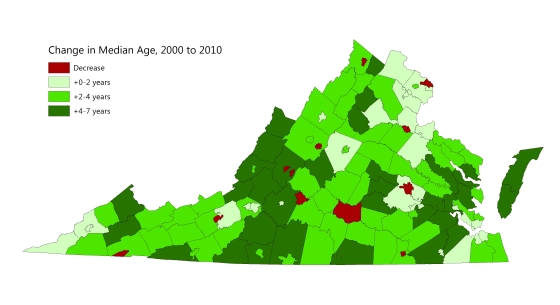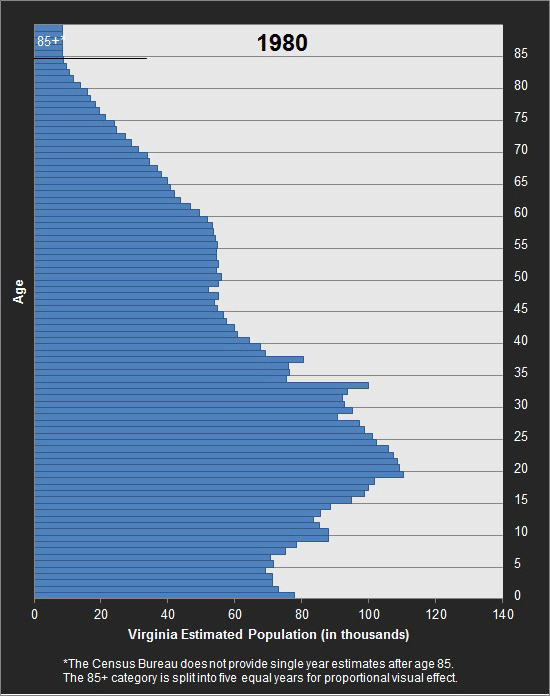There is a lot of buzz amongst urbanists and demographers about millennials’ preference for urban areas. We’ve found evidence to support this narrative in some areas of Virginia, including indications that they may be staying even after having kids.
But there’s also a lot of talk about baby boomers retiring and moving into cities. Maybe this is happening in other parts of the U.S., but it’s certainly not the case in Virginia. On the contrary, they appear to be heading for the hills. In fact, despite Forbes Magazine naming Virginia its 5th best state to retire in, Virginia does not appear to attract many retirees in general.
Virginia is aging quickly, as can be seen on the map below. From 2000 to 2010, the median age in the Commonwealth rose from 35.7 to 37.5. In some localities, it rose by as many as 5 or 6 years in just that 10-year period. But most of that is due to a gradual decline in birthrates, not older people moving in. From 2000 to 2010, migration accounted for only a slight (1-2%) increase in the population of age groups around retirement age, and that increase was smaller than the state’s overall growth rate.




